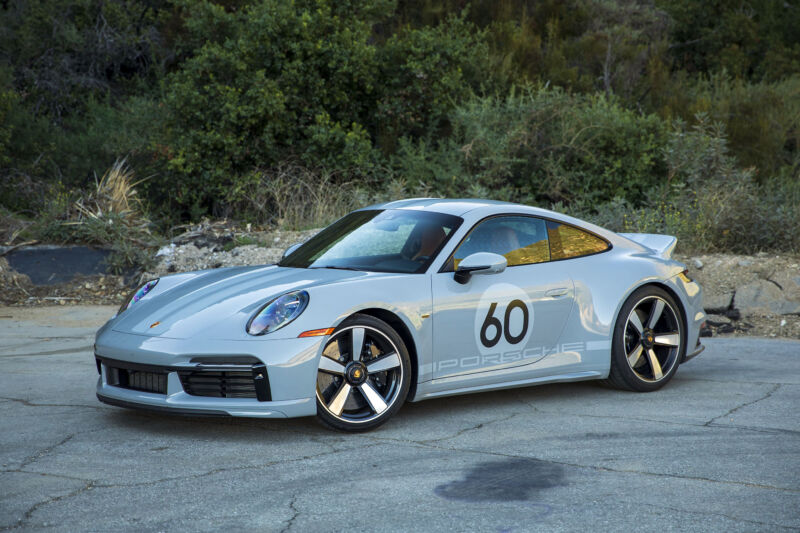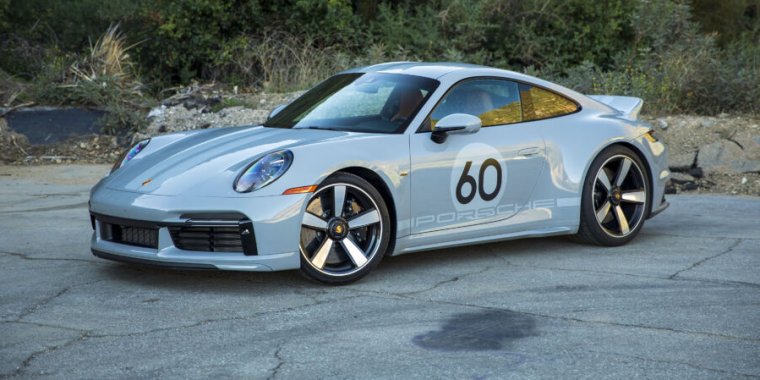dear Santa… —
The limited-production model focuses on driver involvement, not performance stats.
Bradley Iger
–

Enlarge / We never get tired of seeing the different ways Porsche finds to tweak the venerable 911. It’s outdone itself with the Sport Classic, but the car comes with a price tag that means very few will experience it.
Bradley Iger
Sports cars have always been emotionally driven purchases, and perhaps no automaker understands this better than Porsche. There are more than two dozen iterations of the 911 on sale today, and while it can sometimes feel like sussing out the differences in character between one variant and another is an exercise in splitting hairs, the new Sport Classic tugs at enthusiasts’ heartstrings in a way that no other modern 911 can.
Part of the Heritage Design Edition series, which includes a 911 Targa as well as two more as-yet-unnamed models, the new Sport Classic leverages the formidable capability of the latest 911 Turbo while delivering a genuinely unique driving experience and a distinct sense of style.
While its purposeful stance comes courtesy of the Turbo’s widened body, elements like the bespoke carbon fiber hood, the Carrera GT-inspired carbon “double bubble” roof, and the eye-catching carbon fiber ducktail rear spoiler—the latter of which pays homage to the iconic 911 Carrera RS 2.7 of the early 1970s—help to provide the Sport Classic with a look all its own. The bodywork is also further differentiated from its Turbo sibling thanks to the deletion of the side intakes, a change that necessitated new tooling to stamp the unique panels that run from underneath the front of the doors all the way to the rear bumper. New inlets installed under the ducktail spoiler are on hand to channel air into the engine’s intake system.
Enlarge / As Porsche learned more and more about aerodynamics, it left the ducktail behind for larger rear wings.
Bradley Iger
Fuchs-style five-spoke centerlock wheels further enhance the throwback vibe, and the Sport Classic also scores a Porsche Heritage badge on the intake grille that references the badge that was awarded to Porsche 356 owners back in the 1950s when a vehicle reached the 100,000-kilometer mark. Our tester’s Sport Grey Metallic paint is exclusive to the model, too, and serves as a nod to the Fashion Grey hue that was originally offered on the 356. Would-be owners can specify any number between 1 and 99 at no additional cost for the Sport Classic’s motorsport-style side graphic, but Porsche is also quick to point out that the livery is composed of decals rather than being painted on, allowing for easy removal if buyers prefer a more low-key look.
Designers paid similar attention to the 911 Sport Classic’s interior treatment, outfitting the seat centers and door panels with Pepita cloth upholstery that recalls the cabins of 911s from the ’60s and early ’70s, while ultra-supple semi-aniline leather upholstery now sees its first use outside of the 918 Spyder hypercar. White and green accents adorn the tachometer and clock, while dark Paldao wood trim comes standard on every Sport Classic, as does a serialized badge on the passenger side of the dashboard above the glovebox that denotes each example’s place in the model’s 1,250-unit production run.
While Porsche has put significant effort into the Sport Classic’s aesthetic, the biggest changes are beneath the skin. Like the bodywork, the Sport Classic’s powertrain is based on the 911 Turbo, but unlike the Turbo, the Sport Classic is rear-wheel-drive rather than all-wheel-drive. And whereas the Turbo is offered exclusively with an eight-speed PDK automatic, the Sport Classic instead opts for a seven-speed manual transmission, making this the most powerful manually shifted 911 that you can buy today.
Enlarge / Like the ducktail, Porsche now only seems to break out the houndstooth fabric for very special occasions.
Bradley Iger
The powertrain revamp does come with a caveat, though: Due to the limitations of the seven-speed gearbox, the 3.7 L twin-turbocharged flat-six has been dialed back from 572 hp (427 kW) and 553 lb-ft (750 Nm) of torque in the Turbo to 543 hp (405 kW) and 442 lb-ft (600 Nm) in the Sport Classic. However, the 3,468-lb (1,573 kg) Sport Classic is nearly 200 lbs (90 kg) lighter due to the removal of the all-wheel drive system, so it actually boasts a slightly better power-to-weight ratio. The powertrain is bolstered by a raft of chassis upgrades, too; rear-axle steering, adaptive dampers, and active anti-roll bars borrowed from the Turbo S are all standard equipment here.
In practice, it translates to a 911 that trades performance statistics for driver involvement. Although the Sport Classic’s 3.9-second 0–60 time is more than a second behind the Turbo’s—and very conservative by our estimate—we never noticed the deficit out on the winding tarmac of the Angeles National Forest.
The seven-speed has been criticized for its notoriously long gearing in models like the Carrera S and GTS, but it seems better suited to the 3.7 L engine’s power delivery. Although seventh gear still feels largely superfluous and the shifter lacks the bolt-action tactility of the six-speed boxes used in models like the 911 GT3 and Cayman GT4, rowing through the gears in the Sport Classic is an absolute riot thanks in part to the fact that the peak torque figure is achieved at just 2,000 RPM.
…. to be continued
Read the Original Article
Copyright for syndicated content belongs to the linked Source : Ars Technica – https://arstechnica.com/?p=1987979
